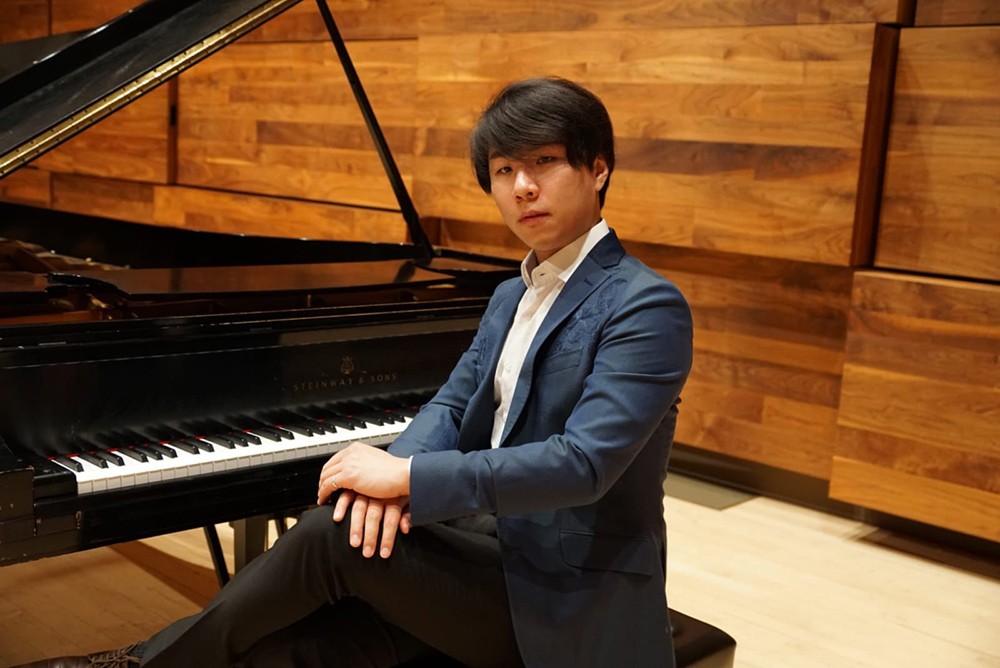Conductors are the architects of orchestral and choral performances. They shape sound and guide musicians to deliver a unified, compelling interpretation of each piece. Chun Ho Tam is an internationally renowned conductor, not only for his musicianship but also for the qualities that define his approach to music. He has identified five essential traits that aspiring conductors should cultivate throughout their career to make their mark in the arts.
Chun Ho’s wisdom is very precious for anyone who wants to be a conductor. He stresses creativity, originality, consciousness, leadership, and resilience as qualities that are not only desirable but necessary for success and fulfillment in this field. Each of these traits plays a vital role in helping conductors connect with musicians and audiences. These traits enhance the overall musical experience.
The demand for conductors increasingly relies on these qualities as the arts continue to evolve. Chun Ho Tam’s guidance will serve as a roadmap for future conductors, providing them with the tools they need to navigate the challenges and opportunities ahead. His leadership of the Chicago Chinese Performing Arts and Dong Fang Performing Arts has not only flourished but also celebrated successes, such as a remarkable concert at the Wentz Concert Hall & Fine Arts Center, acknowledged by Chicago’s Mayor and Governor.
Through these key qualities, hopeful conductors will shine in their art and inspire others. Through these qualities, they will make a deeper impact through the power of music. In this sense, Chun Ho Tam’s commitment to musical excellence and cultural authenticity can be an example of how such qualities lead to profound impact within the community and beyond.
1. Creativity
Creativity is the lifeblood of any artist, and Chun Ho emphasizes its importance in the realm of conducting. A creative conductor is one who dares to explore new ideas, pushing the boundaries of traditional interpretations. ‘Putting Chinese culture into my music is the core of all that I do,’ Chun Ho Tam mentions. This quality allows conductors to breathe fresh life into well-known compositions and involves musicians and audiences in exciting ways.
Now, imagine this conductor approaching the classical symphony not just as an artifact of history but as a living piece of art which could again be reimagined. By experimenting with different tempos, dynamics, and interpretations, a conductor can create a performance that resonates with contemporary audiences while honoring the work’s original intent. The creative journey therefore leads to innovative performances that challenge conventions and captivate listeners.
Creativity in the collective should be encouraged. A conductor who assists musicians to share their interpretations and ideas develops an atmosphere in which to collaborate. That creativity can shape performances that are distinctive from one another because of the voices in the ensemble. Conductors would look for experiences in creativity, which may be realized in the form of improvising, working with other artists, or exploring new repertoire.
2. Originality
In a domain where many conductors may come from similar school backgrounds and exposure, originality becomes the point of difference, separating one conductor from another. Chun Ho Tam asserts that for a conductor to achieve his or her ultimate goal of an impact, that conductor must develop a different voice. Originality, he believes, enables conductors to tell stories through music in ways that are only personal insights or interpretations. ‘Every performance is an opportunity to share the beauty of our culture with a broader audience,’ Chun Ho Tam notes.
This quality can also reflect in choices of repertoire that are a little unconventional, in innovative arrangements reflecting the artistic vision of the conductor. For instance, a conductor might focus more on lesser-known works composed by marginalized composers, bringing new narrative forces to the table. In this commitment to originality, the new richness this promises to the musical landscape opens up or creates a sense of inclusiveness and representation in the arts.
Aspiring conductors should take an active approach to develop their individuality through reflection of experiences, influences, and artistic goals. This would allow conductors to let their individuality shine through in their work, thereby making performances more impactful for the audience, leaving their mark in the world of music.
3. Consciousness
Chun Ho highlights the role of consciousness in conducting, pointing out that awareness of cultural and emotional contexts can make a huge difference in the ability of a conductor to connect with the audience. The understanding of the historical, social, and emotional backgrounds of a piece can inform the interpretation and convey the significance of the piece better.
For example, when performing a work based on a particular cultural heritage, a conductor should treat it with sensitivity and respect, taking into account the origins and the stories it narrates. This consciousness enables conductors to create performances that resonate at a personal level with audience members and foster a deeper connection through shared experiences and emotions. ‘Being aware of the cultural and emotional contexts of one’s work definitely helps in bonding with the audience on more personal levels,’ Chun Ho states.
This quality also applies to the group. A sensitive conductor who understands the different backgrounds of his or her musicians can create a setting where every member feels appreciated. By acknowledging and appreciating each musician’s difference, a conductor can build unity and teamwork in the performance, thus making it even better.
Aspiring conductors should first emphasize cultural awareness through studies of music history, cultural context, and lives of composers. This knowledge would not only enrich their interpretations but also prepare them to discuss meaningfully with their audiences about the music they will be performing.
4. Leadership
Good leadership is an essential part of successful conducting, and Chun Ho Tam stresses the need for this crucial role in the guidance of a team of musicians. A conductor must be both technically proficient and inspire and motivate others to work towards a common goal. This quality will help in establishing a collaborative and harmonious atmosphere within an ensemble.
An excellent leader is also a good communicator. A conductor should set clear expectations and encourage open discussion among musicians. When such a conductor inspires a culture of trust and respect among the musicians, they will feel safe sharing ideas and taking artistic risks. In this atmosphere of teamwork, there will be more harmonious and engaging performances.
Leadership also encompasses mentorship. Conductors have a chance to make the next generation of musicians better through their guidance and support. By taking time to nurture young talent, conductors can enable young musicians to build their skills and confidence. ‘It feels great to know we’re all in this together, working towards a common goal,’ Chun Ho mentions.
Aspiring conductors should hone leadership skills through practice and experience, be it in conducting ensembles or teaching, or even working with fellow musicians. This can help in becoming a better inspirational and guiding figure for musicians.
5. Resilience
Challenges abound in the path of arts, and Chun Ho Tam emphasizes resilience as a major tool for beating failures. For any successful conductor, perseverance over adversity is what defines them. Arts are always unpredictable, either because the performances might not be up to mark or there are extraneous factors creating a hurdle. ‘Arts can be cruel, and the path is full of setbacks,’ Chun Ho says.
Resilience allows conductors to look upon challenges as development opportunities. Where others might collapse under the burden of setbacks, a resilient conductor will reflect upon the experience and learn from it for future performances. This mindset enhances their craft and further serves as an example for other musicians they might lead.
Resilience also includes keeping the passion and enthusiasm alive despite the ups and downs. The arts can be demanding, and it is easy to become disheartened. Conductors who cultivate resilience find ways to reignite their passion, whether through self-care, continued education, or reconnecting with the joy of making music.
Aspiring conductors should develop coping strategies to navigate the inevitable challenges they will face. By embracing resilience, they can remain committed to their artistic journey and inspire others to do the same.
Chun Ho Tam’s insights into the essential qualities of a conductor—creativity, originality, consciousness, leadership, and resilience—serve as a valuable guide for aspiring musicians. By cultivating these traits, future conductors can not only excel in their craft but also enrich the experiences of everyone involved in the musical journey.
As future conductors continue on their paths, they should never forget that the journey is indeed as important as the destination. Each practice session, performance, every conversation with other musicians and the audiences, contribute to their growth both as artistic and leadership functions. To do so, they can profoundly impact the soundscapes of the world, forging connections, inspiring others, and celebrating the transformative power of the arts.
Ultimately, these qualities do not only improve the work of the individual conductor but also enrich a vibrant and inclusive artistic community. As Chun Ho reminds us, the arts have the power to connect us, tell stories, and bridge divides. By being these essential qualities, aspiring conductors can ensure that their contributions resonate far beyond the concert stage, enriching the cultural landscape for generations to come.






